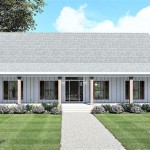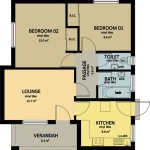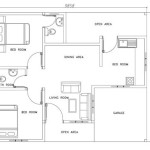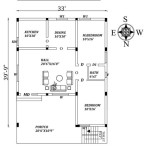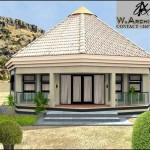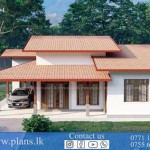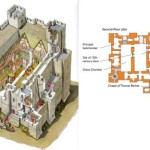Exploring the Elegance of French Country House Plans
French Country house plans, also known as French Provincial, evoke a sense of rustic charm and timeless elegance, drawing inspiration from the picturesque countryside of France. These homes blend sophistication with a relaxed, informal aesthetic, making them highly desirable for individuals seeking a comfortable yet stylish residence. Characterized by distinctive architectural features and a warm, inviting ambiance, French Country designs offer a unique blend of practicality and aesthetic appeal.
The popularity of French Country architecture stems from its ability to create a welcoming and livable space. The designs often incorporate a blend of natural materials, such as stone, brick, and wood, contributing to the home's organic and earthy feel. Furthermore, the inclusion of elements like steeply pitched roofs, dormers, and arched openings adds to the overall visual interest and architectural detail. The resulting homes possess a character that is both classic and inviting, appealing to a wide range of homeowners.
Successfully implementing a French Country house plan requires careful consideration of various design elements, including the floor plan layout, material choices, and landscaping. Integration of these elements is crucial for achieving the desired aesthetic. The following points highlight some of the key aspects to consider when exploring French Country house plans.
Key Feature: Exterior Architectural Details
The exterior of a French Country home is perhaps its most defining characteristic. Several architectural details contribute to its distinctive appearance. One prominent feature is the steeply pitched roof, often clad in slate, tile, or even asphalt shingles designed to mimic the look of traditional materials. The roof's steep pitch allows for efficient water runoff and creates an aesthetically pleasing silhouette.
Dormers, which are small, projecting windows set into the roof, are another common element. Dormers serve both functional and aesthetic purposes, providing additional light and ventilation to attic spaces while also adding visual interest to the roofline. The shape and style of the dormers can vary, ranging from simple shed dormers to more elaborate arched dormers, depending on the desired level of formality.
Arched openings, whether used for doorways, windows, or porch entries, are a hallmark of French Country design. Arches soften the lines of the structure and add a touch of elegance. These arched elements contribute to the romantic and inviting feel of the home. Often these arches lead to sheltered porches and courtyards adding to the feeling of warmth.
Exterior materials are also critical in achieving the authentic French Country look. Natural stone, particularly limestone, is a common choice for cladding the exterior walls, although brick and stucco are also frequently used. These materials provide a sense of permanence and solidity while also contributing to the home's rustic charm. The use of contrasting materials, such as stone accents around windows and doors, can further enhance the visual appeal.
Shutters, typically made of wood and often painted in muted colors, are another common detail. Shutters add character and can be functional, providing protection from the elements, or simply decorative, enhancing the overall aesthetic. The style of the shutters can range from simple louvered shutters to more elaborate paneled shutters.
Landscaping plays a crucial role in complementing the architectural style. Manicured gardens with symmetrical layouts are often paired with French Country homes. The use of gravel pathways, stone planters, and wrought-iron accents further enhances the overall aesthetic. The goal is to create a harmonious transition between the interior and exterior spaces, blurring the line between the home and its natural surroundings.
Key Feature: Interior Layout and Design
The interior layout of a French Country home typically emphasizes open and flowing spaces, creating a comfortable and inviting atmosphere. While the exterior may be more formal and structured, the interior is often designed for relaxed living. Key features include spacious living areas, generously sized kitchens, and comfortable bedrooms.
The kitchen is often the heart of the French Country home, designed as a gathering space for family and friends. Large islands, ample counter space, and custom cabinetry are common features. Farmhouse sinks, often made of porcelain or copper, add to the rustic charm. The use of natural materials, such as wood countertops and stone backsplashes, further enhances the kitchen's organic feel.
Fireplaces, typically constructed of stone or brick, are often a focal point in the living areas. Fireplaces provide warmth and ambiance, creating a cozy and inviting space for relaxation. Detailed mantelpieces, often adorned with decorative carvings or moldings, add to the fireplace's visual appeal. The hearth serves as a gathering place for family and friends, promoting social interaction and a sense of community.
Flooring choices often include natural materials such as hardwood, tile, or stone. Hardwood floors, typically stained in warm, earthy tones, add to the home's rustic character. Tile floors, such as terracotta or slate, are often used in kitchens and bathrooms, providing durability and visual appeal. Stone floors, such as limestone or travertine, create a sense of elegance and permanence.
Color palettes typically consist of warm, muted tones, such as creams, beiges, and soft blues. These colors create a calming and inviting atmosphere. Accents of bolder colors, such as reds, yellows, or greens, can be used to add pops of visual interest. The use of natural light is also important, with large windows and skylights used to maximize the amount of daylight entering the home.
Furniture choices often include comfortable upholstered pieces, such as sofas, chairs, and ottomans. The use of natural fabrics, such as linen, cotton, and wool, adds to the home's relaxed and informal feel. Antiques and vintage pieces are often incorporated into the decor, adding character and history to the space. The overall goal is to create a comfortable and inviting space that reflects the homeowner's personal style.
Key Feature: Practical Considerations and Modern Adaptation
While French Country house plans often evoke a sense of tradition, it is important to consider practical aspects and modern adaptations to ensure that the home is functional and comfortable for contemporary living. This involves careful attention to energy efficiency, smart home technology, and accessibility considerations.
Energy efficiency is a crucial aspect to consider when designing or renovating a French Country home. Implementing energy-efficient windows, insulation, and heating and cooling systems can significantly reduce energy consumption and lower utility bills. Sustainable building materials, such as recycled wood and eco-friendly insulation, can also be used to minimize the home's environmental impact.
Smart home technology can be seamlessly integrated into a French Country home without compromising its traditional aesthetic. Smart thermostats, lighting controls, and security systems can enhance convenience and efficiency while remaining discreetly integrated into the home's design. The use of wireless technology and hidden wiring can help to maintain the home's clean and uncluttered appearance.
Accessibility considerations are also important, particularly for homeowners who plan to age in place. Incorporating features such as wider doorways, ramps, and grab bars can make the home more accessible for individuals with mobility limitations. Universal design principles, which aim to create spaces that are usable by people of all ages and abilities, can be seamlessly integrated into a French Country home without sacrificing its aesthetic appeal.
Adapting French Country house plans for smaller lot sizes or tighter budgets is also possible. Simplified floor plans, smaller footprints, and the use of less expensive materials can help to reduce construction costs without sacrificing the overall aesthetic. Careful planning and attention to detail are essential for achieving the desired look within budget constraints.
The adaptation of French Country design to suit modern lifestyles is evident in many new builds. Open floor plans, larger windows to maximize natural light, and gourmet kitchens equipped with modern appliances are all common features. These adaptations cater to the needs of contemporary homeowners while still retaining the charm and elegance of the traditional French Country style.
Ultimately, a successful French Country house plan balances aesthetic appeal with practical considerations. By carefully considering the exterior architectural details, interior layout and design, and modern adaptations, homeowners can create a beautiful and functional residence that reflects their personal style and meets their unique needs. The enduring appeal of French Country architecture lies in its ability to create a warm, inviting, and timeless home that can be enjoyed for generations to come.
French Country House Plans Houseplans Blog Com
French Country Floor Plans Madden Home Design
French Country House Plans For A 5 Bedroom 4 Bath Home
One Story French Country Style House Plan 7002 Brookhaven
Plan 48033fm Petite French Cottage Country House Plans Style
Plan 72226 French Country House Plans With 3302 Sq Ft 5 Beds
House Plan 52005 French Country Style With 3938 Sq Ft 4 Bed 3
French Country Floor Plans Madden Home Design
Home Plan Avignon Sater Design Collection
Dream French Country House Plans Floor Designs

